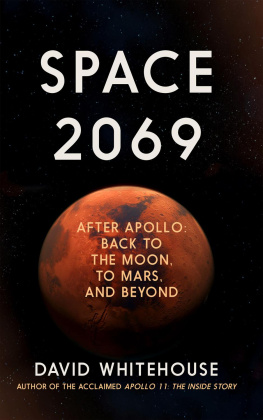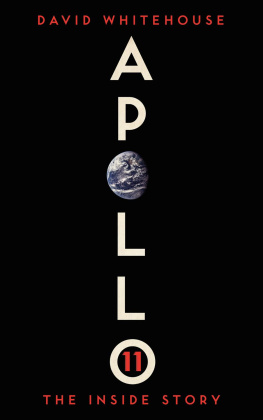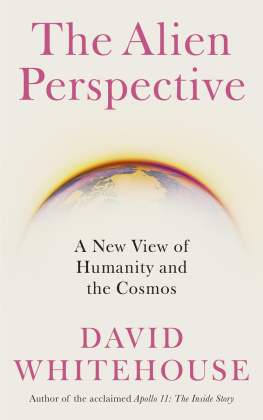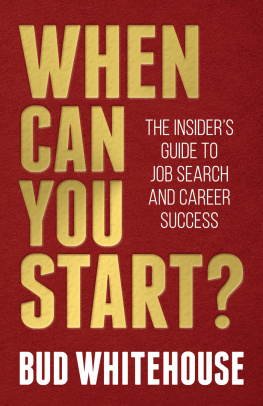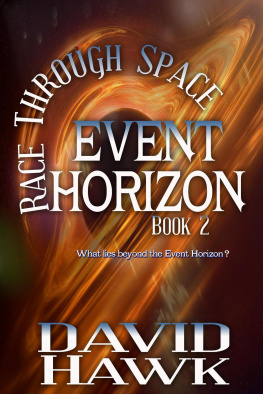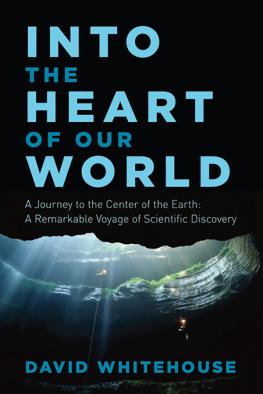David Whitehouse - Space 2069
Here you can read online David Whitehouse - Space 2069 full text of the book (entire story) in english for free. Download pdf and epub, get meaning, cover and reviews about this ebook. year: 2020, publisher: Icon Books Ltd, genre: Religion. Description of the work, (preface) as well as reviews are available. Best literature library LitArk.com created for fans of good reading and offers a wide selection of genres:
Romance novel
Science fiction
Adventure
Detective
Science
History
Home and family
Prose
Art
Politics
Computer
Non-fiction
Religion
Business
Children
Humor
Choose a favorite category and find really read worthwhile books. Enjoy immersion in the world of imagination, feel the emotions of the characters or learn something new for yourself, make an fascinating discovery.
- Book:Space 2069
- Author:
- Publisher:Icon Books Ltd
- Genre:
- Year:2020
- Rating:3 / 5
- Favourites:Add to favourites
- Your mark:
- 60
- 1
- 2
- 3
- 4
- 5
Space 2069: summary, description and annotation
We offer to read an annotation, description, summary or preface (depends on what the author of the book "Space 2069" wrote himself). If you haven't found the necessary information about the book — write in the comments, we will try to find it.
Space 2069 — read online for free the complete book (whole text) full work
Below is the text of the book, divided by pages. System saving the place of the last page read, allows you to conveniently read the book "Space 2069" online for free, without having to search again every time where you left off. Put a bookmark, and you can go to the page where you finished reading at any time.
Font size:
Interval:
Bookmark:

v
For Jill
vi
vii
By three methods we may learn wisdom: first, by reflection, which is the noblest; second, by imitation, which is the easiest; and the third by experience, which is the bitterest.
C onfucius viii
I recall one Tuesday afternoon in the 1990s I was sitting at my desk in Broadcasting House, home of the BBC, and the phone rang.
Hello, its Arthur Clarke here. Have you seen the latest images from Mars? Most weird.
Arthur C. Clarke wanted there to be life on Mars. He felt it would speed up getting humans there.
Dammit, he told me, I thought wed be at Jupiter by 2001, but I dont think we will be back on the Moon by then.
Those who know his works would say that Arthur was far too optimistic over timescales of decades and centuries, but far too pessimistic when looking thousands or millions of years into the future! It was one of Arthurs books that really inspired me when I was barely in my teens. The Promise of Space, it was called. I still have it. I wonder what Arthur would have said if I had the chance to tell him that one day I would write a book about only the next 50 years in space.
This book grew out of my previous book, Apollo 11: The Inside Story. Its a kind of sequel. Having just looked back 50 years to the first lunar landing I thought it would be interesting to assess what we might have achieved 100 years xii after the small step. While writing it I realised what Arthur would have felt like when writing his profiles of the future. We will never know what we got right.
I recall talking with Carl Sagan in a hotel in London about the future of space and our discussion automatically moved to Mars. He also talked, in a typically Sagan way, of looking for a benign aperture through which to see the 21st century and a hopeful future for the human species. He was aware that we could take our Earthly troubles into space.
Then there was Patrick Moore, who wrote a fascinating book in the 1970s called The Next 50 Years in Space, with wonderful illustrations by David Hardy. It had spaceships landing on the moons of Jupiter and astronauts driving pressurised rovers on the moons of even more distant Saturn. The book is ever wonderful but I did feel regret on realising humanity would probably never do those things. Patricks response was to say, Why dont we get the telescope out and look for sunspots?
I feel this book might disappoint Arthur, Carl and Patrick. Arthur would perhaps have me include a mysterious alien artefact travelling through the solar system as in his 1978 novel The Fountains of Paradise. Carl would be disappointed I didnt tackle his favourite subject, the search for intelligent life in space, which I have left out to concentrate on the human story, knowing its a discovery that could be made tomorrow or never. Its a subject for another book. Patrick, in a parallel universe, would have got his wish to present his TV show The Sky at Night from the surface of the Moon. This book explains why he sadly never got the chance. xiii
So many people over so many years have contributed to this book through correspondence and conversations. I would like to thank Nick Booth for valuable comments and Icons Robert Sharman for his expert editing that has significantly enhanced this book. My agent Laura Susijn has been a wonder, even though at times I must have driven her to distraction. My wife Jill has been as marvellous as ever, and my children Christopher, Lucy and Emily have been so enthusiastic. Lastly, thanks to Tobi our Cavalier King Charles Spaniel who has on long walks through the countryside helped me sort out many problems, and frequently brought me down to Earth.
David Whitehouse
Hampshire
June 2020 xiv
I n 2012 the Austrian skydiver Felix Baumgartner jumped from the stratosphere, launching himself from a capsule suspended from a helium balloon. Before he jumped, he looked at the Earth below him, its curvature clearly visible, the raw sunlight showing him and his capsule in a brutal light. His pressure suit was custom-made and had four layers to keep him protected from the harsh environment around him. He looked every inch a spaceman.
Baumgartner was at an altitude of 38,969 metres in the very upper reaches of the atmosphere, which was cold, thin and deadly. Yet as he contemplated the moment, the atmosphere around him was warmer and thicker than that found on the surface of Mars. xvi


The Moon.
Shackleton crater.
Lunar latitude 90 degrees south.
Date: 2069.
A t the exact moment of the centenary, the depths of Shackleton crater at the Moons south pole went dark, as they had been for billions of years before humans arrived. The eight giant mirrors on the craters rim heliostats that rotated to keep the Suns light reflected into the crater started to turn and the pools of light they cast moved swiftly across the craters floor, up its ramparts, disappearing into space. The mirrors turned to the precise orientation required to reflect the Suns light towards Earth: to a particular spot in North America. Millions on Earth were watching the southern region of the Moons grey disc, whether with the unaided eye, binoculars or telescope, hoping to catch the optical flare from the mirrors on the Moon.
Wapakoneta had a population of 12,236 at the 2060 census but the town had swelled for the event. Teachers and students from the high school were waving their red-and-white school flags as well as the Stars and Stripes. All over the globe if people were not looking at the Moon, or couldnt see it, they were watching the celebrations. They all cheered as they saw the flashes from the Moon, saluting the birthplace of the first man to walk on it, Neil Armstrong, 100 years ago. At the time of the 50th anniversary there were only four of the original moonwalkers alive and only 20 per cent of the population had been around at the time of the first Moon landing. Fifty years later no one who took part in the Apollo program was alive. Given the advances in medicine there were still many who recalled the event. But there was a letting it slip into history the loss of the Apollo heroes and anyone who had ever known them personally. But there were moonwalkers at the centenary of Apollo 11. The thirteenth person on the Moon was in her eighties and just as sprightly as Buzz Aldrin had been in 2019.
A few minutes later attention turned to the screens and a large black-and-white image of the lunar surface. This was the view from the cameras positioned around the First Footprint sanctuary. The main cluster of cameras was stationed on the edge of West crater about 400 metres away. Nothing was allowed closer, but the view from the tower was clear. The desolate lower stage of the Apollo 11 lunar module and the flag lying on the ground. Floodlights highlighted with crisp shadows every footprint and scuff mark. The tracks leading towards Little West crater, 50 metres east of the lunar module, were visible. It was an unplanned excursion, when Armstrong had gone to get a look inside near the end of the two-and-a-half hours that he and Aldrin had spent on the surface. The image closed in on the lunar module leg where the very first footfall was made and mostly obliterated by subsequent boot marks. The site had been laser scanned and converted to virtual reality so anyone could walk up to the forlorn module and read the plaque: Here men from the planet Earth
Font size:
Interval:
Bookmark:
Similar books «Space 2069»
Look at similar books to Space 2069. We have selected literature similar in name and meaning in the hope of providing readers with more options to find new, interesting, not yet read works.
Discussion, reviews of the book Space 2069 and just readers' own opinions. Leave your comments, write what you think about the work, its meaning or the main characters. Specify what exactly you liked and what you didn't like, and why you think so.

